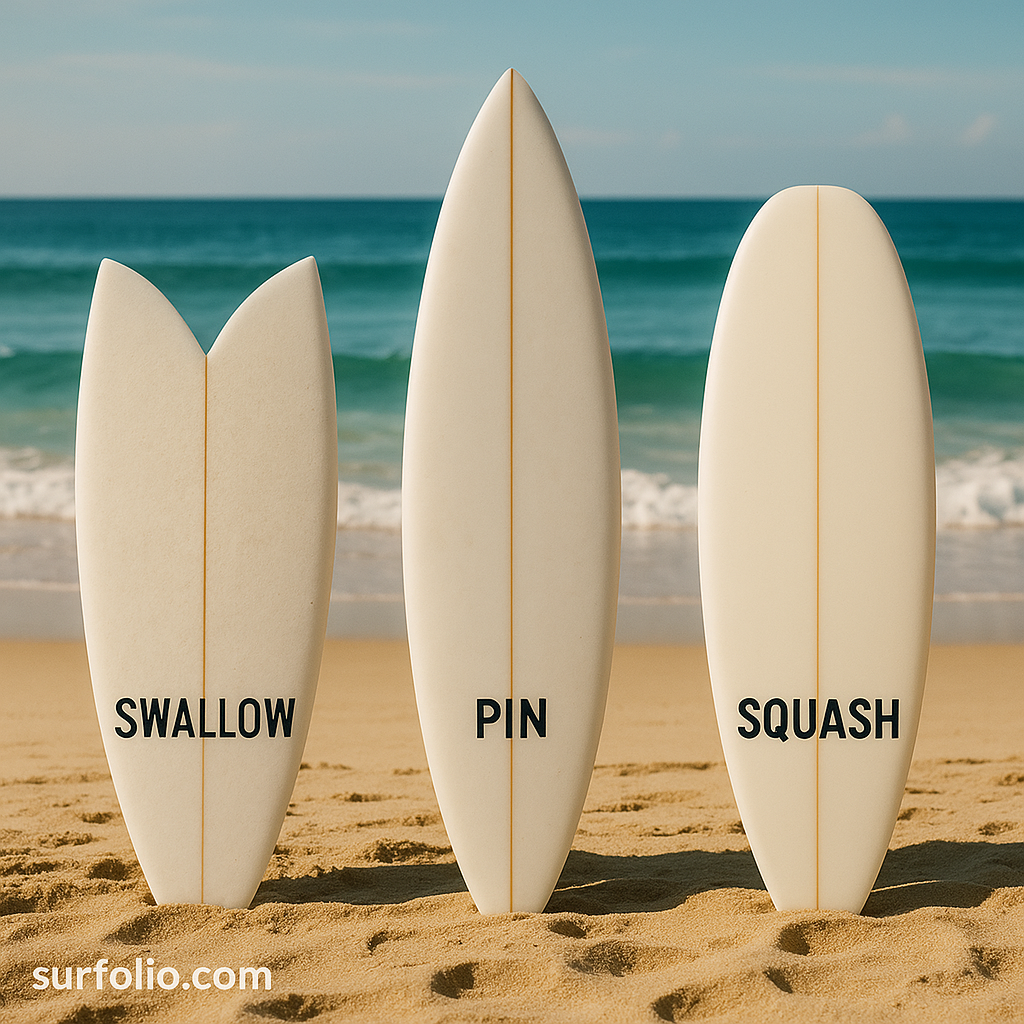
When it comes to surfboard design, few features influence performance as much as the tail shape. It’s the board’s connection point with the wave, controlling how water releases and how responsive your turns feel. Choosing between a swallow, pin, or squash tail can completely change how your board handles different conditions. Here’s what makes each shape unique—and which one fits your surf style.
The Swallow Tail
Best for: Small to medium waves, playful turns, and added control
The swallow tail, with its distinctive “V” shape, combines elements of both speed and maneuverability. The split design creates two points of contact with the water, giving it extra grip during turns while keeping a lively, loose feel.
Because the center section is cut out, water flows off the tail faster, increasing lift and helping you generate speed even in smaller, weaker surf. That’s why swallow tails are common on fish boards and hybrid shapes—they thrive in everyday conditions and beach breaks.
Advantages:
- Great for small or mushy waves
- Excellent hold and control in turns
- Adds playful responsiveness to your ride
Downside:
- Can feel unstable in big, powerful waves
The Pin Tail
Best for: Big waves, control, and stability
The pin tail is narrow and tapered, built for holding steady when the surf gets serious. Its shape reduces surface area, allowing water to flow smoothly around the tail for maximum control and hold in critical situations.
You’ll find pin tails on step-up and gun boards, designed for surfers who need confidence at high speeds or on steep faces. They track beautifully down the line and stay locked in through big, drawn-out turns.
Advantages:
- Unmatched control in large, powerful surf
- Smooth, predictable turns at high speeds
- Excellent hold in barrels
Downside:
- Less maneuverable in small waves
- Slower to generate speed in weaker surf
The Squash Tail
Best for: All-around performance and versatility
The squash tail is the most popular shape for good reason—it offers the perfect balance of speed, control, and maneuverability. The squared-off corners allow for sharp, snappy turns while the flat section provides lift and drive down the line.
This design works in almost any condition, from chest-high beach breaks to overhead reef waves. If you’re looking for one board that does it all, a squash tail shortboard is a safe bet.
Advantages:
- Versatile and adaptable across wave types
- Great combination of stability and responsiveness
- Ideal for progressive surfing and performance maneuvers
Downside:
- Less specialized for extreme wave conditions
Which Tail Is Right for You?
- Go Swallow: If you love playful rides in small-to-medium surf.
- Go Pin: If you’re chasing barrels or surfing powerful, steep waves.
- Go Squash: If you want an all-around board for everyday use.
Final Thoughts
Surfboard tail design might seem like a small detail, but it makes a massive difference in how your board feels and reacts. Whether you crave speed, control, or flow, choosing the right tail shape can elevate your surfing and help you match your board to the waves you love most.
